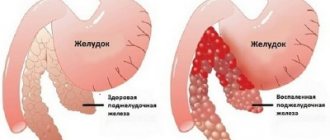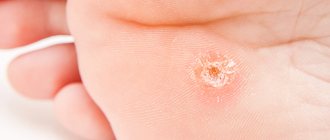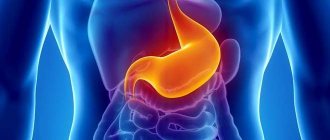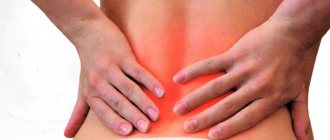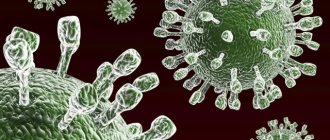Causes of neurasthenia
Symptoms of neurasthenia in women appear when a combination of individual weakness of the human nervous system and exposure to stressful environmental factors:
- weak nervous system . As a rule, a person who has symptoms and signs of neurasthenia has a melancholic character, or is choleric;
- the presence of neurological disorders from early childhood: perinatal lesions of the central nervous system, birth injuries, hypoxic lesions of the fetus, previous infectious processes in early childhood;
- a disease of a viral or bacterial nature , suffered on the eve of the manifestations of symptoms of neurasthenia: ARVI , influenza, exacerbation of any chronic disease;
- focus of chronic infection in the body: caries, pyelonephritis, endocarditis, abscess , tuberculosis, adnexitis;
- intoxication of the body of a chronic nature: smoking, alcohol abuse, drug abuse.
- deficiency of mineral components and vitamins;
- physiological deprivations: insufficient sleep, poor diet, lack of satisfaction of sexual needs, lack of proper rest;
- mental trauma;
- work requiring increased mental stress;
- discrepancy between human needs and the satisfaction of these needs;
- lack of physical activity as an opportunity to throw out accumulated energy.
In addition, it is worth noting that the following diseases are often the causes of the appearance of symptoms of neurosis:
- endocrinological disorders;
- hormonal imbalances;
- brain tumors;
- metabolic disorders;
- autoimmune diseases.
Causes
- The main cause of neurasthenia is exhaustion of the nervous system due to overwork of any kind. Most often it occurs when mental trauma is combined with hard work and deprivation.
- Modern people are constantly in tension, waiting for something, doing boring, same-type work that requires responsibility and attention.
- Factors contributing to asthenic neurosis:
- somatic diseases;
- endocrine disorders;
- chronic lack of sleep;
- malnutrition and lack of vitamins;
- irregular working hours;
- frequent conflicts in the environment;
- infections and intoxications;
- bad habits;
- increased anxiety;
- heredity
Classification (types of neurasthenia)
Astheno-neurotic syndrome (the second name for neurasthenia) is a pathological process consisting of three stages of development:
- Hypersthenic form. This is the initial stage of the development of symptoms of neurosis. Characterized by the appearance of irritability and mild excitability. Irritated by noise, light, large numbers of people, children's pranks. Everything that a person previously treated calmly begins to bother him.
Tension headaches, general weakness, and increased fatigue may occur. Against this background, excitability increases, a person is able to throw out negative emotions on his family. Performance decreases due to the inability to maintain concentration at work. Characterized by frequent distractions, with difficulty returning to work.
The quality of sleep is disturbed: difficulties appear when falling asleep, frequent awakenings with dreams of an alarming nature. This form of neurasthenia is often perceived by others and the patient himself as a character trait, or as a consequence of the lack of proper rest. In this regard, there is no adequate treatment for astheno-neurotic syndrome at this stage, so the disease smoothly flows into the next stage.
- Irritable weakness. This is form 2 of neurasthenia. She is characterized by increased irritability followed by an outburst of emotions, often in the form of tears. Combined with increased fatigue and the appearance of general weakness.
Signs of pathology
The problem has a second name - asthenic neurosis. Neurasthenia is often not an independent disease , but a pathological condition of the nervous system associated with its depletion as a result of prolonged overload, not only emotional, but also physical (lack of sleep, rest, nervous work, overexertion).
Sometimes it becomes a consequence of somatic diseases or intoxications. Knowing that this is not a disease, but a functional disorder, the neurasthenic reduces the importance of the problem for himself, and recovery is easier.
Its basis is the elimination of the cause of the deterioration of the condition. It is quite easy to draw a portrait of a typical neurasthenic. This is an active and efficient person, usually between the ages of 20 and 40, usually a man.
The nervous system of the fair sex is by nature more adapted to endure prolonged overloads.
The patient requires professional help; he will not be able to recover on his own in every case. City dwellers suffer from overload 200% more often than rural residents. Schoolchildren and students are often at risk during exam periods.
Important! The patient is not sick, but his social life and work suffer due to physical ailments and disruptions in his emotional state.
Signs and symptoms
Signs of neurasthenia in women consist of mental and autonomic disorders. Mental disorders are represented by the following manifestations:
- general weakness;
- feeling overwhelmed;
- increased fatigue;
- performance is reduced;
- daytime sleepiness;
- insomnia at night;
- low self-esteem;
- absent-mindedness;
- inability to genuinely rejoice;
- indifference to what is happening;
- lack of motivation to do something;
- impatience.
Mental disorders contribute to the development of a typical symptom complex:
- periodic dizziness;
- cardiopalmus;
- increased sweating;
- high blood pressure;
- decreased memory;
- short-term appearance of pain of various localizations;
- stabbing pain in the chest - cardialgia;
- cold extremities;
- marble skin, pale;
- decreased libido;
- Tension headache (TTH is a common type of primary headache).
The last symptom of neurasthenia is typical of the disease. It is manifested by the sensation of having a “helmet” or “helmet” on the head. The pain covers the entire head, like a hoop, and intensifies after mental or physical stress. “Neurasthenic helmet” is the second name for the symptom of neurosis.
Patients with signs of neurosis are usually weather sensitive and react to weather changes.
It should be noted that the child may also develop signs of neurosis. The reason for this is the adaptation period (starting to attend kindergarten, school, change of place of residence), unhealthy psychological situation in the family, conflicts in adults, and neurological diseases.
Traditional methods of treatment
Medicinal herbs are a very effective method of treating neurasthenia, as they have a positive and, in some cases, sedative effect on the body. They restore strength, strengthen the nervous system and relax.
Baths for women and children
Such therapeutic baths should be taken before bedtime, since after the procedure it is advisable to go to bed. The following recipes are considered the most effective :
- You will need mint, lemon balm, wormwood, pine buds, calamus root and yarrow (3-4 tbsp each). Herbs are brewed in a 10-liter container and infused for 5 hours. Then the infusion should be poured into the bath, after filtering. It is recommended to take such a bath for no more than 15 minutes at a temperature of 35-37 degrees.
- 1 cup of crushed angelica roots needs to be poured into 3 liters. water, then simmer for 15 minutes over low heat. Then add 1 tbsp. l. oregano and mint. Keep the broth on the stove for another 10 minutes. After this, the broth is infused for an hour, filtered and poured into the bath. It should be taken no more than 20 minutes.
Herbal treatment
Health improvement at home is not complete without the use of medicinal decoctions. For this you will need various herbs and berries:
- Chicory . You cannot do without it if neurosis is accompanied by pain in the heart. 2 tsp. crushed flowers pour 1 tbsp. boiling water The product should be taken in 100 ml doses. 3 times a day before meals.
- The disease can be cured at home with bedstraw . For this, 1 tsp. Add 1 tbsp of the herbs to the soup. boiling water, then cool. You need to take the medicine throughout the day.
- To prepare this remedy you will need viburnum bark . Neurosis often provokes problems with the gastrointestinal tract, so you should pour 1 tsp. crushed bark with a glass of boiling water and boil for 15 minutes. After this, the broth must be filtered. Take 1 tbsp. l. before eating.
- The disease can be cured using the following remedy: you need to tear off the petals from a young sunflower that has just blossomed, place it in a glass container and fill it with vodka. The medicine is infused for 10 days. Take 1 tsp. before meals.
- For nervous diseases you cannot do without valerian . To prepare, you need to take 4 tsp. crushed roots pour 50 ml. boiling water If you prepare the medicine in the evening, you need to infuse it all night. Adults take 1 tbsp infusion. l. 3-4 times, and children are given 1 tsp.
Complications
Often, neurasthenia without adequate therapy develops into a chronic form. In this case, exacerbations of the disease last for several months. In the absence of necessary treatment for the chronic stage, transformation into a depressive disorder is fraught. It will require longer and more serious treatment from a psychiatrist. It follows that it is very important to identify the diagnosis of neurasthenia at the initial stages and refer the patient to a psychotherapist.
Hypersthenic form
This is the first stage of the disease, which is characterized by symptoms such as increased mental excitability and irritability. The patient reacts sharply to the slightest noise, rapid movement of people, and quiet conversations. Patients who experience this stage of the disease are impatient and irritable, which negatively affects their performance. Inability to concentrate, absent-mindedness, inattention, lack of concentration - due to these symptoms, the patient can spend about three hours on work that requires no more than an hour of time.
The patient is also concerned about sleep disturbances: he cannot fall asleep for a long time, often wakes up at night, after which it is difficult to fall asleep. Due to sleep disorders, in the morning he does not feel sleepy and rested; he is accompanied by a bad mood that persists until the end of the day. In this state, a person is usually capable of harsh statements and conflicts with others. Patients with the hypersthenic form of the disease also complain of poor memory, malaise and headache.
Diagnostics
Diagnosis: “neurasthenia” is made by a neurologist or psychotherapist. A doctor of any specialty may suspect a diagnosis of neurasthenia, but to prescribe treatment it is necessary to refer the patient to a psychotherapist or neurologist.
A neurologist often treats manifestations of the disease at the first stage. The second and third forms of the disease require the intervention of a psychotherapist.
At the appointment, the doctor, at the stage of listening to complaints, will suspect an illness. Additionally, the patient’s history will reveal trigger factors for the development of the disease. To confirm the diagnosis, an examination may be prescribed:
- blood tests: general, biochemical, hormones, markers of autoimmune pathology;
- electrocardiogram;
- monitoring of daily blood pressure and heart rate;
- tomography (MRI) of the brain;
- consultation with an ophthalmologist, endocrinologist;
- X-ray of the cervical spine;
- examination of the vessels of the neck and head.
After a detailed examination of the patient and identification of symptoms, the doctor will prescribe treatment.
Neurasthenia in children
Childhood neurasthenia is provoked by various events of a psychotraumatic nature.
According to statistics, boys are more susceptible to nervous disorders, and age does not play a role.
The relationship with parents has a huge impact on the child's psyche.
The following factors put a child out of balance:
- constant dissatisfaction of parents;
- great demands;
- excessive loads;
- lack of love and affection towards the child;
- uncomfortable environment at home and in school.
Among the symptoms of childhood neurasthenia, we highlight the following:
- excited state;
- irritation for no reason;
- hysterics;
- depressed mood;
- tearfulness.
Such symptoms are easily confused with banal childish whims. If this behavior has not become a habit, there is no need to worry. But, if irritation and hysterics are repeated day after day, consult a neurologist.
Treatment of neurasthenia and recommendations
In the first stages, treatment can be prescribed by a neurologist, especially after exclusion/confirmation of neurological defects. Consultation and treatment with a psychotherapist is also an integral part of recovery in adults.
If signs of neurosis arose against the background of a traumatic situation, if possible, you need to work it out with a psychotherapist and eliminate the cause itself. It is important for the child to improve the situation in the family and help them adapt to changed conditions.
If the cause lies in somatic pathology, a malfunction of the endocrine system, the doctor will prescribe appropriate treatment:
- brain tumor – surgical treatment;
- failure of hormones - replacement or suppressive therapy;
- autoimmune disorders – hormonal therapy;
- lack of minerals and vitamins - compensation with multivitamins;
- sanitation of the focus of chronic infection, if any;
- insufficient blood supply to the brain - vascular drugs, antihypoxants, antiplatelet agents.
Treatment
To cure asthenic neurosis, you need to find out and neutralize its cause.
Treatment of early stage neurasthenia:
- streamlining the daily routine;
- eliminating the cause of emotional stress;
- general strengthening of the body;
- staying in the fresh air;
- autogenic training.
In severe neurosis it is indicated:
- hospital treatment;
- use of tranquilizers and antidepressants;
- for cardiovascular disorders - bromine preparations;
- psychotherapy.
Folk remedies for neurasthenia:
- Treatment with plant juices - beet juice with honey.
- Treatment with decoctions, tinctures and infusions: from oregano, blackberry, sage, thyme, ginseng root, St. John's wort, viburnum, hawthorn.
- Teas and medicinal drinks from valerian, chamomile, sweet clover, lemon balm, linden and strawberry, motherwort.
- Therapeutic baths - pine, with calamus, with bran.
- Pranayama is a cleansing breath from yoga.
Features of the manifestation of the disorder in children and adolescents
Asthenic neurosis in children occurs as a result of exposure to various psychotraumatic factors. This condition is characterized by temporary and reversible dysfunction of the nervous system.
Children and adolescents are more vulnerable to factors that can disrupt their mental state. The causes of the disorder include fear of adults (parents, educators, teachers), divorce of parents, introduction to a new environment (first visit to kindergarten, school), excessive stress (training, extra classes). Also, the development of asthenic neurosis can be affected by infectious diseases and exposure to toxic substances.
Neurasthenia in children manifests itself in increased irritability and tearfulness. Sometimes reactions such as excitement and impetuosity may predominate, and sometimes lethargy and uncertainty. It is very difficult for a child to restrain his emotions. There are problems with sleep, there is a lack of appetite and uncontrollable urination at night.
If not treated in a timely manner, the child’s ability to socially adapt may be impaired and depression may develop.
Forms and stages of development of the disease
There are a number of successive stages of development, according to which three clinical forms of neurasthenia are distinguished.
| Hypersthenic form | It appears at the very beginning of the disease and is quite rarely regarded as a pathology: most often the symptoms are attributed to ordinary fatigue or character traits. In this phase, the most common signs of neurasthenia are agitation, irritability, and sleep disturbances. A person in this state can be driven out of patience by literally every little thing: too loud sounds or speech, bright colors, people’s desire to communicate with him, the need to do some kind of work, etc. |
| Irritable weakness | The main symptom of this phase of neurasthenia is irritable weakness, which manifests itself in people with a choleric temperament, as well as in those who have a strong and fairly balanced type of nervous system, but have not been cured at the hypersthenic stage, as a result of which the pathogenic situation is preserved. In this case, the patient with great effort forces himself to start this or that task, he manages to concentrate on the task at hand, but at the same time he gets tired extremely quickly, which is manifested not only by the inability to think logically, but also by an increase in headache. Result: a feeling of nervous weakness and, as a rule, cessation of work. |
| Hyposthenic form | The hypersthenic form of neurasthenia is characterized by increased irritability, tearfulness, increased sensitivity to small stimuli, impatience, incontinence, impaired attention, etc. The reverse form of neurasthenia - hyposthenic (or asthenic) - is distinguished by a more pronounced component of asthenia itself, both mental and physical. Efficiency and interest in the environment decrease, a feeling of staleness, lethargy, fatigue, and sometimes drowsiness appears. |
Classification of neuroses
In addition to neurasthenia, hysterical, obsessive-compulsive, hypochondriacal and anxiety neuroses are distinguished. They must be distinguished from each other, because people with these pathologies need competent treatment. If the diagnosis is made incorrectly, then a completely different amount of therapeutic assistance will be prescribed, and this can cause the transition of neurosis into a psychotic state.
Hysterical neurosis is observed mainly in women. The main manifestation is demonstrative behavior, the desire to attract attention. Such patients talk and laugh loudly, show inappropriate emotions, may stutter and have impaired vision and hearing.
Anxious is manifested against the background of the development of generalized anxious personality disorder. The main component of neurosis is uncontrollable fear, restlessness, a large number of vegetative symptoms (palpitations, lump in the throat, sweating, dry mouth, etc.). This also includes panic attacks (short-term outbursts of anxiety that occur in a stressful situation for a person or during sleep).
Obsessive-compulsive neurosis or obsessive-compulsive neurosis is a disorder in which there will be, as the name suggests, a constant influx of thoughts and actions that the person is unable to control (nail biting, leg shaking, lip licking, etc.).
And finally, hypochondriacal neurosis. In addition to irritability, apathy and fatigue, it includes excessive care over one’s health.
Characteristics
The onset of the disease is characterized by prolonged mental and physical stress. A transition from one form of neurosis to another is possible. As an example: against the background of insomnia, irritability and fatigue, obsessive thoughts appear that have no underlying reason. If the patient went to the hospital about this, then it is necessary to differentiate this condition from schizophrenia. Dissatisfaction with sex life, use of medications and drugs can also be associated with neurotic personality disorder.
Probably many people are concerned about the question of how to restore the nervous system. After normalization of the working day, sleep and elimination of the irritating factor, the psyche is gradually restored. If this does not happen, then you need to consult a psychiatrist.
What is neurasthenia
Neurasthenia is a neurosis characterized by a combination of increased excitability with irritable weakness, increased exhaustion, and dysfunction of the autonomic nervous system. Neurasthenia develops as a result of prolonged exposure to physical overload (for example, stressful work), frequent stressful situations, protracted conflicts or personal tragedies. You can also identify factors that may favor the occurrence of neurasthenia - these are somatic diseases and chronic intoxication.
Asthenic neurosis is registered in students, businessmen, programmers and other people whose activities are associated with active brain function.
Diagnosis of the disease
It is quite difficult to correctly determine the exact diagnosis of neurasthenia. The decision is based on the patient’s complaints, a thorough external examination, and the use of instrumental methods. With their help, you can immediately eliminate chronic diseases, various infections, and somatic lesions. However, you need to make sure that there is no brain injury. To do this, a computed tomography scan should be performed.
Diagnosis of neurasthenic syndrome is made on the basis of complete trust between the patient and the doctor. The doctor in this case acts as a psychologist. The patient needs to be told about everything that worries and torments him. The fact is that the analysis of neurasthenia cannot be carried out using special studies; the diagnosis is made solely on the patient’s stories and certain criteria.
Clinical picture
The symptom complex of neurasthenic syndrome includes three components:
- actual clinical manifestations of asthenia;
- disorders associated with an underlying pathological condition;
- disorders caused by the patient's psychological reaction to the disease.
There are two main types of disorder, which largely overlap each other.
- The main characteristic feature of the first type is complaints of increased fatigue after mental stress, which is often associated with some decrease in performance or productivity in daily activities. Mental fatigue is described by patients as an unpleasant occurrence of absent-mindedness, weakened memory, inability to concentrate and ineffective mental activity.
- In another type of disorder, the emphasis is on a feeling of physical weakness and exhaustion even after minimal exertion, accompanied by a feeling of muscle pain and an inability to relax. Both types of the disorder are characterized by a number of common unpleasant physical sensations, such as dizziness, tension headaches and a feeling of general instability.
Common features also include concern about decline in mental and physical abilities, irritability, loss of the ability to enjoy joy, and mild depression and anxiety. Sleep is often disturbed in its initial and middle phases, but drowsiness can also be severe.
Neurasthenia should be distinguished from ordinary fatigue , which occurs after excessive physical or mental stress, change of time zones or climate, and failure to comply with the work and rest regime. Unlike physiological fatigue, neurasthenia develops gradually, persists for a long time, does not go away after proper rest, and requires medical intervention to eliminate it.
Neurasthenia is often accompanied by disorders of the autonomic nervous system: tachycardia, pulse lability, changes in blood pressure, chilliness or a feeling of heat in the body, generalized or local hyperhidrosis, loss of appetite, constipation, pain along the intestines. Headaches and dizziness are possible. Men experience a decrease in potency.
Depending on the form of neurasthenia, it may be accompanied by sleep disturbances of various types. Hypersthenic asthenia is characterized by difficulty falling asleep, restless and intense dreams, night awakenings, early awakening and a feeling of weakness after sleep. Hyposthenic asthenia is characterized by daytime sleepiness. At the same time, problems with falling asleep and poor quality of night sleep persist.
Sleep is a natural physiological process, the average sleep duration in humans is 7–8 hours. With a lack of sleep, immunity, activity, ability to work, quality of life, psycho-emotional state decrease, neurasthenia and other diseases can develop. The prevalence in the population of insomnia, disturbances of night sleep and daytime wakefulness, according to Russian and foreign data, has increased sharply in the last 5 years from 8–15% to 20%, and in some regions even higher. Many researchers associate this with psycho-emotional tension and a stressful situation in the world.
There are modifiable and non-modifiable risk factors for the development of insomnia.
- Non-modifiable include genetic predisposition, female gender, and age.
- Modifiable factors include acute stress, prolonged psycho-emotional overload, and the nature of work (sliding schedule with night shifts and intense rhythm). Many medications, such as antibiotics, hormonal drugs, antiarrhythmics, antihypertensives, antidepressants, diuretics, nootropic drugs, can disrupt sleep.
Acute and chronic somatic and neurological diseases provoke the development of insomnia. Patients with insomnia feel tired in the morning, and in the afternoon, on the contrary, in an excited state, which is due to an increase in the secretion of cortisol, which contributes to the hyperactivity of the renin-angiotensin system, an increase in heart rate and temperature. Manifestations of insomnia can be any disturbances in the sleep process - its initiation (presomnic), maintenance (intrasomnic) or completion (postsomnic).
- With presomnia disorders, a person cannot fall asleep immediately. Presomnia disorder is characterized by difficulty falling asleep over a long period of time. Anxious thoughts, evening hyperactivity caused by various reasons prolong the period of falling asleep to 3-4 hours.
- Intrasomnia disorders are manifested by frequent awakenings at night and difficulty falling asleep after such awakenings.
- Postsomnia disorders are characterized by early, premature (1–2 hours) awakening.
General characteristics of the disease
Asthenic neurosis (neurasthenia, nervous weakness) is a disorder of a neuropsychogenic nature, which is caused by physical or psycho-emotional exhaustion.
This is the most common pathology of the nervous system. Persons of the asthenic type, who are emotionally unstable, easily tired, and hypersensitive, are more susceptible to this disorder. In women, asthenic neurosis is much less common than in men.
The condition manifests itself in increased fatigue, irritability, decreased mood up to depression, and inadequate sensitivity to various kinds of stimuli (noise, light, temperature).
The development of such a condition can be facilitated not only by physical or psychological stress, but also by chronic diseases, as well as intoxication of the body.
Nerve weakness can develop in both adults and children.
Treatment of neuroses in men
Treatment of neuroses in men
Usually several specialists are involved - psychologists, psychotherapists and sex therapists, starting, first of all, with the elimination of psychotraumatic factors, using psychoanalysis and psychotherapeutic methods, often resorting to suggestion in a state of hypnotic sleep, using physiotherapy and various relaxation methods.
The complex treatment of neuroses in men includes sedative and vitamin therapy, a lot of attention is paid to eliminating factors that cause emotional stress, the ability to control stressful situations, and ensuring a psychologically comfortable environment at work and at home.
A significant role is given to maintaining a sleep schedule, a balanced diet, moderate physical activity, and ensuring proper rest.
A full, healthy sleep is not only vitality for the whole day, but also the ability to withstand the significant mental stress that men are exposed to during the working day. Therefore, in the complex treatment of neuroses in men, sedatives are used that can eliminate emotional stress and dysfunction in the nervous system, as well as manifestations of insomnia in its various types.
To treat neuroses, specialists are now increasingly using herbal preparations based on valerian officinalis and motherwort, which gently eliminate signs of neurosis in men of any kind, reducing deviations in the functioning of the autonomic system at different periods of life, including during manifestations of menopausal neurosis.
Signs of neurasthenia in men that you should pay attention to
In men, the signs of neurasthenia are more associated not with the psychological, but with the functional aspect. These include increased irritability, weakness and constant aching pain in the muscle area. According to medical statistics, it is men who often develop the second form of the disease, which is chronic in nature. Cholerics and those who actively engage in sports are more susceptible to this.
In men, the disease manifests itself as follows:
- inability to concentrate on something for more than 5-10 minutes;
- increased physical and psychological fatigue;
- frequent and prolonged headaches;
- signs of nervous weakness;
- the man experiences difficulties with the simplest, at first glance, logical operations.
Treatment of people with neurasthenia
It is difficult to describe how to treat neurasthenia, since the disease manifests itself individually in each patient. Today, various methods can be used, such as medications, traditional recipes, water treatments, yoga, acupuncture, etc. However, they relieve symptoms only for a short period of time.
First of all, you need to find out the reason that caused the neurosis and, if possible, neutralize it. An important condition for a favorable cure for neurasthenia is a change in lifestyle, which consists of eliminating the unfavorable factors that cause or provoke neurasthenia. Such factors, for example, include:
- nervous work
- chronic lack of sleep,
- excessive consumption of alcoholic beverages.
Often it is due to people’s unwillingness to change their lifestyle that neurasthenia cannot be cured. And this result will not depend on the chosen treatment method.
For all forms of neurasthenia, Sonapax can be prescribed. In small doses, it acts as an antidepressant and has a stimulating effect on the nervous system, therefore it is used in the hyposthenic form. In large doses it exhibits a sedative effect, which makes it possible to use it in the treatment of the hypersthenic form.
In practice, former neurasthenic patients note that changing traditional behavior and giving up bad habits helps to get rid of asthenic neurosis. Pay attention to nervous work, alcohol use and chronic lack of sleep. Eliminate negative factors to alleviate the condition.
Try to look at life not with your eyes, but with your mind. If you carefully understand the reasons for the occurrence of certain negative reactions, you can get rid of the disease yourself.
By the way, you shouldn’t be shy about a psychotherapist. Neurasthenia is a reality of modern life. At school and institutes they are not taught to live in conditions of increased mental and physical activity. The rhythm of life is constantly accelerating and you need to react calmly to it.
Diagnostic features
Before starting treatment for neurasthenia, the doctor must accurately establish the diagnosis and distinguish the pathology from other diseases with similar symptoms. During the diagnosis, the patient's complaints and medical history are studied. During the examination, it is important to exclude the presence of chronic infectious diseases, as well as various intoxications that can lead to the development of neurasthenia.
If necessary, the doctor may refer the patient for additional examinations (CT or MRI), since many tumors and inflammatory processes also lead to the above unpleasant symptoms. To identify diseases of the endocrine system, an ultrasound examination of the thyroid gland is prescribed.
Irritable weakness
It is at this stage of the development of the disease that patients seek help from an appropriate specialist. Against the background of persistent symptoms of the hypersthenic form, the feeling of fatigue is somewhat worsened, and pronounced irritability appears. Short periods of intense expression of feelings are replaced by apathy and silent irritation.
Patients find it increasingly difficult to carry out their work responsibilities. Insomnia often appears at this stage. Light, the vital functions of the body, sounds from the outside - all this prevents a person from falling asleep. As a result, he becomes lethargic and exhausted. All signs indicate that neurasthenia is progressing.
Symptoms of a visceral nature are necessarily present in this form. These are, first of all, unstable blood pressure, headaches, and rapid heartbeat.
Treatment of the pathology is complex. Longer rest and physical therapy may be required. Medications (nootropics, adaptogens, sleeping pills) are prescribed without fail.
For prevention purposes
The fundamental factors in the development of asthenic neurosis are emotional and physical exhaustion, therefore measures to prevent this disorder should be aimed at eliminating provoking situations. To do this you need:
- competently build and maintain a regime of work, proper rest and sleep;
- promptly resolve situations that may lead to stress;
- to refuse from bad habits;
- eat well, eliminating junk food from your diet;
- organize active recreation from time to time;
- if necessary, practice relaxation techniques;
- spend more time in the fresh air.
Of course, it is impossible to completely protect yourself from the possibility of a traumatic situation, but it is quite possible to strengthen not only the body, but also strengthen mental health.


